Description
The instruction
for medical use
of Telsartan® medicine
the Trade name
of Telsartan®
the International unlicensed
name Telmisartan Lekarstvennaya a form
of the Tablet of 40 mg, 80 mg
Structure
One tablet contains
active agent – telmisartan 40 or 80 mg respectively,
excipients: meglumin, sodium hydroxide, povidone (PVP K 30), Mannitolum, magnesium stearate, water
the Description
of the Tablet of 40 mg – tablets from white to serovato – white color, a capsulovidny form with an engraving of T and L and risky on one party and 40 on other party
of the Tablet of 80 mg – tablets from white to serovato – white color, a capsulovidny form with an engraving of T and L and risky on one party and 80 on other party.
Pharmacotherapeutic group
the Drugs influencing a system renin-angiotensin. Angiotensin II antagonists. Telmisartan.
The ATX C09CA07 code
the Pharmacological
Pharmacokinetics Telmisartan properties is quickly soaked up, the absorbed quantity varies. The bioavailability of a telmisartan is about 50%.
At reception of a telmisartan along with food the decrease in AUC (the area under a curve concentration time) fluctuates from 6% (at a dose of 40 mg) up to 19% (at a dose of 160 mg). 3 hours later after reception the concentration in blood plasma is leveled, irrespective of meal. Insignificant decrease in AUC does not lead to reduction of therapeutic effect.
The difference in plasma concentration at men and women is observed. Cmax (maximum concentration) and AUC were approximately in 3 and 2 times is respectively higher at women in comparison with men without significant influence on efficiency.
Communication with proteins of plasma more than 99.5%, generally with albumine and alfa-1 a glycoprotein. The volume of distribution is about 500 l.
Telmisartan is metabolized by a konjyugirovaniye of initial substance with a glucuronide. The pharmacological activity of a conjugate is not found.
Telmisartan has the biexponentsialny nature of pharmacokinetics with terminal elimination half-life & gt, 20 hours. Cmax and – to a lesser extent – AUC increase disproportionately with a dose. Clinically significant cumulation of a telmisartan is not found.
After oral administration telmisartan it is almost completely removed through intestines in not changed look. The general excretion with urine is less than 2% of a dose. The general plasma clearance high (about 900 ml/min.) in comparison with a hepatic blood-groove (about 1500 ml/min.).
Patients of advanced age
the Pharmacokinetics of a telmisartan at patients of advanced age does not change.
Patients with a renal failure
At the patients with a renal failure who are on a hemodialysis are observed smaller concentration in plasma. At persons with a renal failure telmisartan contacts proteins of plasma more and it is not removed at dialysis. In a renal failure the elimination half-life does not change.
Patients with a liver failure
At patients with a liver failure the absolute bioavailability of a telmisartan increases to 100%. Elimination half-life in a liver failure does not change.
Children
the Pharmacokinetics of two introductions of a telmisartan was estimated at patients with hypertensia (n = 57) aged from 6 up to 18 years after reception of a telmisartan in doses of 1 mg/kg or 2 mg/kg during the four-week period of treatment. Results of a research confirmed that indicators of pharmacokinetics of a telmisartan at children are aged younger than 12 years correspond to that at adults and, in particular, the nonlinear nature of Cmax was confirmed.
The pharmacodynamics
of Telsartan® is an effective and specific (selection) antagonist of receptors of angiotensin II (AT1 type) for intake. Telmisartan with very high affinity forces out angiotensin of II of places of its binding in receptors of AT1 subtype which are responsible for the known effect of angiotensin II. Telmisartan does not possess effect of agonist concerning receptor AT1. Telmisartan selectively contacts AT1 receptors. Communication has long character. Telmisartan does not show affinity to other receptors, including to AT2 to a receptor and another, less studied by AT receptors.
The functional value of these receptors and also effect of their possible excess stimulation by angiotensin II which concentration increases when assigning a telmisartan, are not studied.
Telmisartan reduces Aldosteronum level in plasma, does not block renin in plasma of the person and ion channels.
Telmisartan does not inhibit angiotensin-converting enzyme (kinase of II) which destroys bradykinin. Therefore there is no strengthening of the side effects connected with effect of bradykinin.
At the person the dose of a telmisartan of 80 mg almost completely inhibits the increase in the arterial blood pressure (ABP) caused by angiotensin II. The inhibitory effect is maintained within more than 24 hours and still is defined in 48 hours.
Treatment of essential arterial hypertension
After reception of the first dose of a telmisartan of the ABP decreases in 3 hours. The maximum decrease in the ABP is gradually reached in 4 weeks after an initiation of treatment and supported during long-term treatment.
Hypotensive action continues within 24 hours after administration of drug, including 4 hours before reception of the next dose that is confirmed by out-patient measurements of the ABP and also steady (it is higher than 80%) ratios of the minimum and maximum concentration of drug after reception of 40 and 80 mg of the drug Telsartan® in controlled clinical trials.
At patients with hypertensia of Telsartan® reduces both systolic, and diastolic pressure without change of heart rate.
Antihypertensive action of a telmisartan was compared to representatives of other classes of hypotensive drugs, such as: amlodipin, atenolol, enalapril, a hydrochlorothiazide, lozartan, lisinopril, ramiprit and valsartan.
In case of sharp cancellation of a telmisartan of the ABP gradually returns to values before treatment within several days without signs of fast resuming of arterial hypertension (there is no syndrome of ricochet).
In clinical trials it is shown that use of a telmisartan is connected with significant degrowth of a left ventricle and the index of mass of a left ventricle at patients with arterial hypertension and a hypertrophy of a left ventricle.
At patients with hypertensia and a diabetic nephropathy at the Telsartan® drug treatment the significant decrease in a proteinuria is observed (including a microalbuminuria and a macroalbuminuria).
In multicenter international clinical trials it was proved what cases of dry cough the patients accepting telmisartan had much less, than at the patients receiving inhibitors of angiotensin-converting enzyme (iAPF).
Prevention of cardiovascular incidence and mortality
At patients of 55 years is also more senior with existence in the anamnesis of an ischemic heart disease, a stroke, diseases of peripheral vessels or diabetes with damage of target organs (a retinopathy, a hypertrophy of a left ventricle, macro and the microalbuminuria) use of the drug Telsartan® allows to reduce the frequency of myocardial infarctions, strokes, hospitalization concerning stagnant heart failure and to reduce cardiovascular diseases mortality.
Children
the Antihypertensive effect of a telmisartan was estimated at patients with hypertensia aged from 6 up to 18 years (n = 76) after reception of a telmisartan in a dose of 1 mg/kg (n = 30 is treated) or 2 mg/kg (n = 31 is treated) for the four-week period of treatment.
The Systolic Arterial Blood Pressure (SABP) on average decreased from a reference value by 8.5 mm.rt. St and 3.6 mm Hg in groups of a telmisartan of 2 mg/kg and 1 mg/kg respectively. The Diastolic Arterial Blood Pressure (DABP) on average decreased from a reference value by 4.5 mm Hg and 4.8 mm Hg in groups of a telmisartan of 1 mg/kg and 2 mg/kg respectively.
Changes had dose-dependent character.
The profile of safety was comparable to that at adult patients.
Indications
treatment of essential arterial hypertension
prevention (decrease) of cardiovascular incidence and mortality at patients are more senior than 55 years with high risk of developing cardiovascular diseases
the Route of administration and doses
of the Tablet telmisartan are intended for daily oral administration and are accepted with liquid, with or without food.
Treatment of essential arterial hypertension
the Recommended dose for adults makes 40 mg once a day.
In cases when the desirable of the ABP is not reached, the dose of the drug Telsartan® can be increased to the maximum 80 mg once a day.
At increase in a dose it is necessary to take into account that the maximum antihypertensive effect is usually reached within four-eight weeks after an initiation of treatment.
Телсартан® it is possible to use in a combination with thiazide diuretics, for example, a hydrochlorothiazide which in combination with telmisartany renders additional hypotensive effect.
Patients with heavy degree of arterial hypertension have a dose of a telmisartan of 160 mg/days (two tablets of drug Телсартан® 80 of mg) and to combinations with a hydrochlorothiazide of 12.5-25 mg/days was well transferred and was effective.
Prevention of cardiovascular incidence and mortality
the Recommended dose makes 80 mg once a day.
It is not found out whether doses lower than 80 mg are effective for decrease in cardiovascular incidence and mortality.
At the initial stage of use of the drug Telsartan® for prevention of cardiovascular incidence and mortality the control of the arterial blood pressure (ABP) is recommended and also it can be necessary for corrections of the ABP the medicines lowering the arterial blood pressure.
Телсартан® it is possible to accept regardless of meal.
The renal failure
Change of a dose with a renal failure is not required from patients, including the patients who are on a hemodialysis. There is a limited experience of treatment of patients with a serious renal failure and a hemodialysis. For such patients it is recommended to begin 20 mg with lower dose. Телсартан® is not removed from blood at haemo filtration.
The liver failure
At patients with slight and moderate abnormal liver functions a daily dose of drug should not exceed 40 mg once in day.
Elderly patients
Dose adjustment is not required.
Side effects
In placebo – controlled tests on patients with arterial hypertension the total number of side effects about which it is reported at reception of a telmisartan (41.4%) is usually comparable to the number of the side effects arising at intake of placebo (43.9%). This number of side effects was not dose-dependent, was not connected with a sex, age or race of patients.
The profile of safety of a telmisartan at the patients taking the drug for prevention of cardiovascular diseases and mortality corresponded to safety profile for patients with arterial hypertension.
The listed below side effects were received as a result of controlled clinical trials in which patients with hypertensia and also from post-market researches participated. Besides, serious side effects and side effects which led to the termination of administration of drug, about which it was reported in three clinical long trials which were carried out with participation of 21,642 patients accepting telmisartan for prevention of cardiovascular incidence and mortality within six years are included.
The undesirable phenomena are given below with use of the following classification: often ≥1/100 to & lt, 1/10, infrequently ≥1/1000 to & lt, 1/100, is rare ≥1/10000 to & lt, 1/1000, also lt, 10000 is very rare.
Infections and invasions:
Infrequently:
– infections of urinary tract (including cystitis), upper respiratory tract infections
it is rare:
– sepsis (including cases with a lethal outcome)
Disturbances from blood and lymphatic system:
Infrequently:
– anemia
Seldom:
– an eosinophilia,
Disturbance thrombocytopenia from the immune system:
Seldom:
– hypersensitivity, anaphylactic reactions
of Disturbance of metabolism:
Infrequently:
– hyperpotassemia
Seldom:
– a hypoglycemia (at patients with diabetes)
Mental disturbances:
Infrequently:
– insomnia, a depression,
it is rare:
– feeling of concern
of Disturbance from the central nervous system:
Infrequently:
– a syncope (syncope)
of Disturbance from organs of sight:
Seldom:
– visual disorders
of Disturbance from an organ of hearing and a vestibular mechanism
Infrequently:
–
Disturbance dizziness from a cardiovascular system:
Infrequently:
– bradycardia, hypotension, orthostatic hypotension
Seldom:
–
Disturbance tachycardia from respiratory organs:
Infrequently:
–
Disturbance short wind from digestive tract:
Infrequently:
– abdominal pain, vomiting, dyspepsia, meteorism, diarrhea
Seldom:
– dryness in a mouth, discomfort in
the Disturbance stomach from a liver and biliary tract:
Seldom:
– dysfunction of a liver / hepatic disorders
of Disturbance from skin and hypodermic fabrics:
Infrequently:
– skin itching, hyperhidrosis, rash
Seldom:
– an angioedema (up to lethal outcomes), eczema, an erythema, urticaria, medicamentous rash, toxic rash
of Disturbance from the musculoskeletal system and connective tissue:
Infrequently:
– a dorsodynia, myalgia, sinew pain (tendinitopodobny symptoms)
it is rare:
– arthralgia, lower extremity pain, spasms of muscles (spasms of gastrocnemius muscles)
General disorders:
Infrequently:
– thorax pain, asthenia (weakness)
Seldom:
– grippopodobny syndrome
of Change of laboratory indicators:
Infrequently:
– increase in creatinine in blood
Is rare:
– decrease in level of hemoglobin, increase in concentration of uric acid in blood, increase in activity of hepatic enzymes, increase in concentration of a kreatinfosfokinaza (KFK) in
Contraindication blood
hypersensitivity to a telmisartan or to any of drug components
obstructive diseases of bilious ways
a heavy liver failure
joint reception of a telmisartan with aliskireny at patients with diabetes or a renal failure (SKF & lt, 60 ml/min. / 1.73 sq.m)
the rare hereditary intolerance of fructose
pregnancy and the period of a lactation
children’s and teenage age up to 18 years
Medicinal interactions
the Drug Telsartan can increase hypotensive effect of other antihypertensive substances. Other clinically significant interactions are not revealed.
Sharing of a telmisartan with digoxin, warfarin, a hydrochlorothiazide, glibenclamide, an ibuprofen, paracetamol, simvastatiny and amlodipiny does not lead to clinically significant interaction. At simultaneous use with digoxin the increase in average minimum concentration of digoxin in blood plasma for 20% (in an isolated case for 39%) therefore it is necessary to carry out monitoring of level of digoxin in blood plasma was observed.
At simultaneous use of a telmisartan and ramipril the increase in AUC0-24 and Cmax of a ramipril and the ramiprilat by 2.5 times was observed. The clinical importance of this phenomenon is not established.
It was reported about reversible increase in concentration of lithium in serum and toxicity when sharing lithium with antagonists of receptors of angiotensin II, including telmisartan. In this case it is recommended to carry out monitoring of level of lithium in blood plasma, and patients have to be under strict observation of the doctor.
Simultaneous treatment by non-steroidal anti-inflammatory drugs (NPVP), including acetylsalicylic acid, inhibitors of cyclooxygenase-2 [TsOG-2] and non-selective NPVP, is connected with risk of developing an acute renal failure at patients with dehydration.
The drugs operating on renin-angiotenzinovuyu a system can possess synergy action. The patients receiving at the same time NPVP and telmisartan should make up in an initiation of treatment adequately for loss of water and to control function of kidneys.
It was reported about some decrease in antihypertensive effect of a telmisartan at simultaneous use with NPVP.
Simultaneous treatment of a telmisartan with corticosteroid drugs decreases antihypertensive effect
Special instructions
Renovascular hypertensia
patients Have an increased risk of developing heavy hypotension with a bilateral stenosis of renal arteries or a stenosis of an artery of the only functioning kidney which receive treatment by the drugs influencing renin-angiotensin-aldosteronovuyu a system.
Renal failures and states after renal transplantation
When using a telmisartan at patients with a renal failure the periodic observation of the level of potassium and creatinine in blood serum is recommended. Experience of use of a telmisartan at patients with recent transplantation of a kidney is absent.
Decrease in the volume of the circulating blood (VCB)
Symptomatic hypotension, especially after reception of the first dose, can be observed at patients with decrease by OCK and/or a hyponatremia owing to massive diuretic therapy, restriction of consumption of salt, diarrhea or vomiting. Such states, especially decrease in OCK and/or decrease in sodium, it is necessary to modify before purpose of a telmisartan.
Double blockade system renin-angiotensin-aldosteronovoy:
Cases of change of function of kidneys (including an acute renal failure) as result of inhibition system renin-angiotensin-aldosteronovoy, registered at susceptible people, especially at a combination of the medicines influencing this system are known. Therefore use of double blockade system renin-angiotensin-aldosteronovoy (for example, at addition of APF inhibitor or direct inhibitor of renin of an aliskiren to the antagonist of receptors of angiotensin II) should be limited to individual cases and to carry out at careful monitoring of function of kidneys.
Other states connected with stimulation system renin-angiotensin-aldosteronovoy
At patients, a vascular tone and which function of kidneys depend mainly on activity system renin-angiotensin-aldosteronovoy (for example patients with heavy stagnant heart failure or an associated disease of kidneys, including a renal artery stenosis), other drugs influencing this system connected treatment with acute hypotension, a hyperazotemia, an oliguria or, in rare instances, with an acute renal failure.
Primary aldosteronism
Patients with primary aldosteronism usually do not react to treatment by the antihypertensive drugs operating by inhibition system renin-angiotenzinovoy. Therefore use of a telmisartan at this group of patients is not recommended.
A stenosis of aortal and mitral valves, a subaortic hypertrophic stenosis
As well as when using other vasodilating drugs, at the patients having an aortal or mitral stenosis or a subaortic hypertrophic stenosis it is necessary to observe extra care when assigning a telmisartan.
The hyperpotassemia
during treatment by the drugs influencing renin-angiotensin-aldosteronovuyu a system can be observed a hyperpotassemia, especially in the presence of diseases of kidneys and/or heart failure. At patients of this risk group it is recommended to control potassium level.
The combined use potassium – the preserving diuretics, drugs of potassium, the substitutes of salt containing potassium or other drugs which can increase potassium level (heparin, etc.) can lead to increase in level of potassium in serum therefore they should be used with telmisartany carefully.
Abnormal liver functions
Telmisartan is brought generally with bile. At patients with obstructive diseases of bilious ways or a liver failure the delay of removal of drug from an organism is possible. Telmisartan at these patients it is necessary to use with care.
Telmisartan sorbitol contains 338 mg of sorbitol in the maximum recommended daily dose of 80 mg. Patients with a rare hereditary disease of intolerance of fructose should not use this medicine.
Diabetes
At patients with diabetes with the accompanying coronary heart disease (CHD) risk of developing a fatal myocardial infarction and unexpected death owing to cardiovascular diseases can raise at treatment by the medicines reducing arterial blood pressure (e.g. blockers of receptors of angiotensin or APF inhibitors). At patients with diabetes of an ischemic heart disease can be asymptomatic and therefore not diagnosed. Patients with diabetes have to undergo appropriate diagnostic inspection (e.g. the electrocardiogram with physical activity) to establish and appoint the corresponding treatment of an ischemic heart disease before reception of a telmisartan.
As well as APF inhibitors, blockers of angiotenzinovy receptors, including telmisartan, have smaller efficiency of decrease in the ABP at black patients, than at conditions of low renin, not black owing to considerable prevalence, at black patients with arterial hypertension.
As well as other antihypertensive substances, blockers of angiotenzinovy receptors can cause excessive pressure decrease of blood in patients with an ischemic cardiopathy or an ischemic cardiovascular disease that can bring to and to a myocardial infarction or a stroke.
Sorbitol
as a part of drug telmisartan contains sorbitol (E420). Patients with rare hereditary problems of intolerance of fructose should not accept telmisartan.
Ethnic distinctions:
According to observations on angiotensin-converting enzyme inhibitors, telmisartan and other antagonists of a receptor of angiotensin II are obviously less effective for lowering of blood pressure of people with black skin, than at other races, it is possible in connection with wider circulation of lowrenine states at the people with black skin having the increased arterial blood pressure.
Pregnancy
is not recommended reception of antagonists angiotensin – II – receptors during pregnancy. Patients, the accepting antagonists angiotensin – II – receptors and planning pregnancy, have to be transferred to alternative therapy by antihypertensive drugs with the known profile of safety when using during pregnancy.
In case of pregnancy establishment the treatment by antagonists angiotensin – II – receptors has to be immediately stopped and the corresponding alternative therapy has to be begun.
Preclinical trials with telmisartany do not confirm teratogenic effect, but testify to a fetotoksichnost.
Antagonists of receptors of angiotensin II are contraindicated during the second and third trimesters of pregnancy as during these periods of pregnancy the reception of antagonists of receptors of angiotensin II is fetotoksichny (deterioration in work of kidneys, oligogidramnion, delay of ossification of a skull) and also toxic for newborns (renal failure, hypotonia, a hyperpotassemia). If antagonists of receptors of angiotensin II were accepted during the second trimester of pregnancy, it is recommended to conduct ultrasonic examination of function of kidneys and a skull. Newborns, whose mothers accepted antagonists of receptors of angiotensin II, have to be observed carefully concerning hypotonia.
The lactation period
Telmisartan is contraindicated in the period of a lactation as it is unknown whether it is allocated with breast milk. Preclinical trials showed discharge of a telmisartan with breast milk.
Fertility
Researches on impact of drug on fertility of the person were not conducted. In preclinical trials the impact of a telmisartan on fertility of both sexes is not revealed.
Other:
As well as at intake of antihypertensive drugs excessive lowered blood pressure at patients with an ischemic cardiomyopathy or an ischemic cardiovascular disease can lead to a myocardial infarction or a stroke.
Features of influence of medicine on ability to run the vehicle or potentially dangerous mechanisms
of Special clinical trials of influence of drug on ability to drive the car and mechanisms it was not carried out. However during the driving and work with mechanisms it is necessary to take a possibility of development of dizziness and drowsiness into account that demands respect for care.
Overdose
Data on overdose at people are very limited.
Symptoms: hypotension and tachycardia can be the most probable signs of overdose, development of bradycardia is also not excluded.
Treatment: the recommended treatment – symptomatic. Telmisartan does not leave from blood a hemodialysis.
The form of release and packing
On 10 tablets pack into strip packaging from aluminum foil.
On 1 (2 or 3) strip packaging from aluminum foil together with the instruction for medical use in the state and Russian languages place in a cardboard pack.
2 years
not to use a period of storage after the expiry date specified on packing.
Storage conditions
In the dry, protected from light place at a temperature not above 25 °C.
To store out of children’s reach!
Prescription status
According to the prescription
Dr. of Reddi’s Laboratoris Ltd Producer, India
to Develop
Additional information
| Ingredient |
|---|





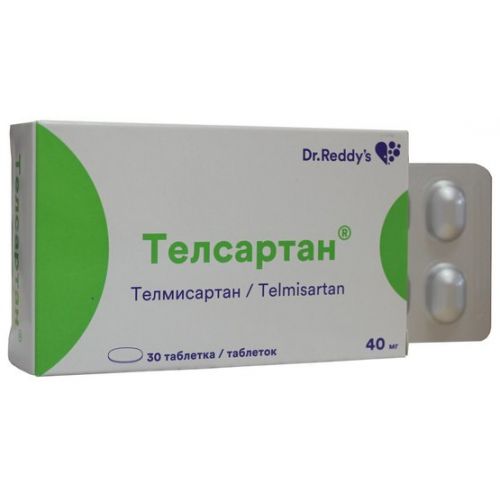
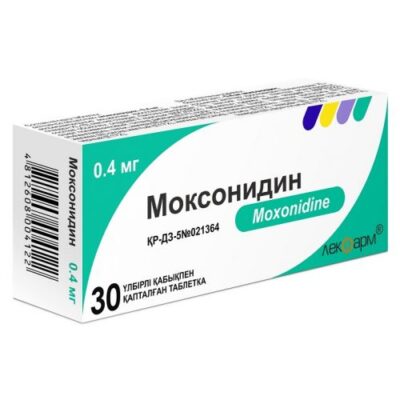
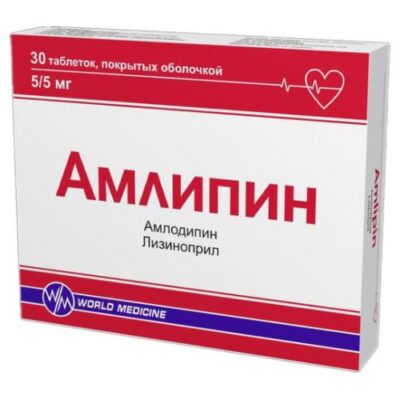
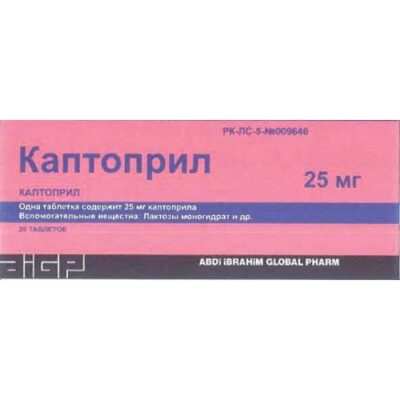
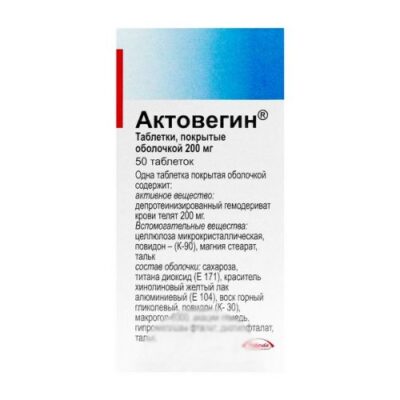
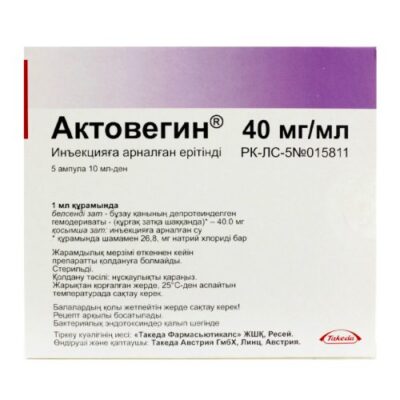
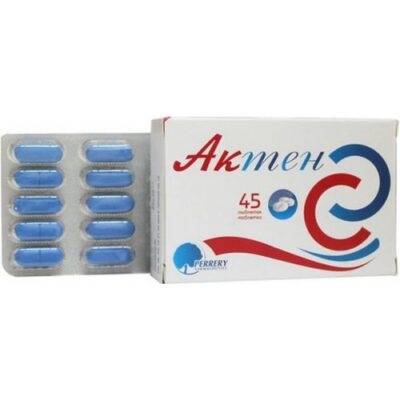
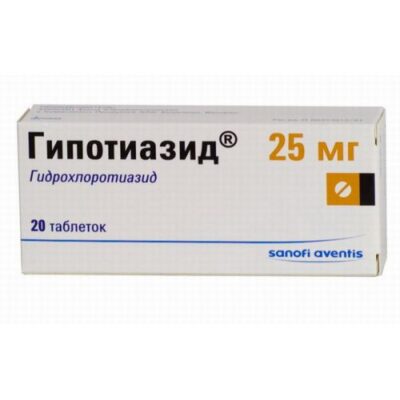
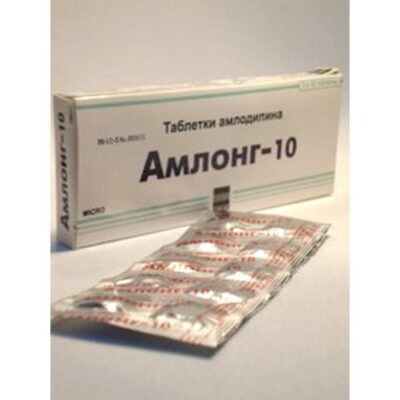
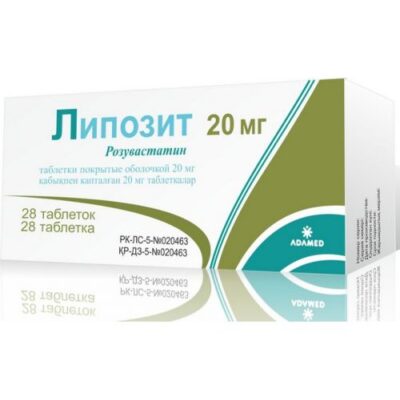
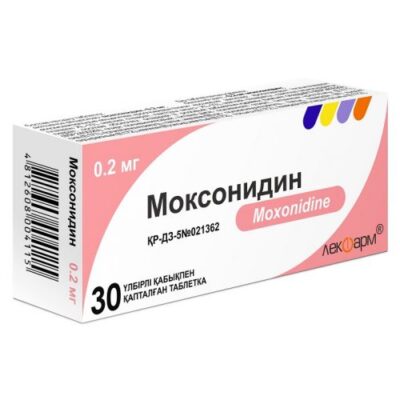






Reviews
There are no reviews yet.